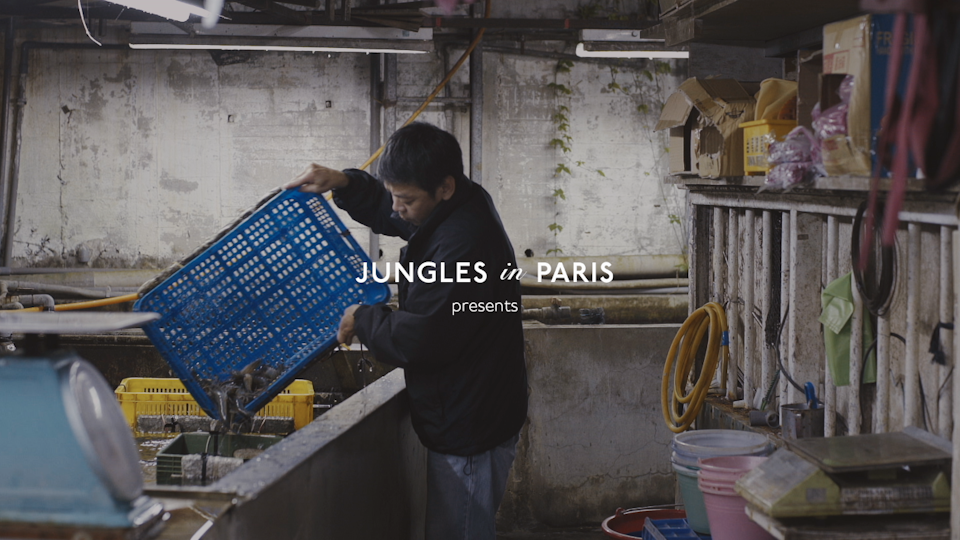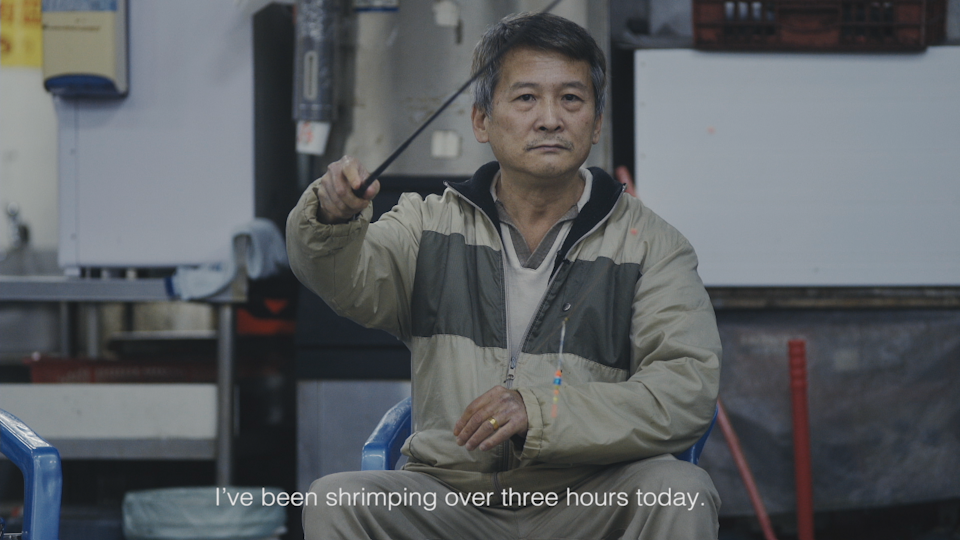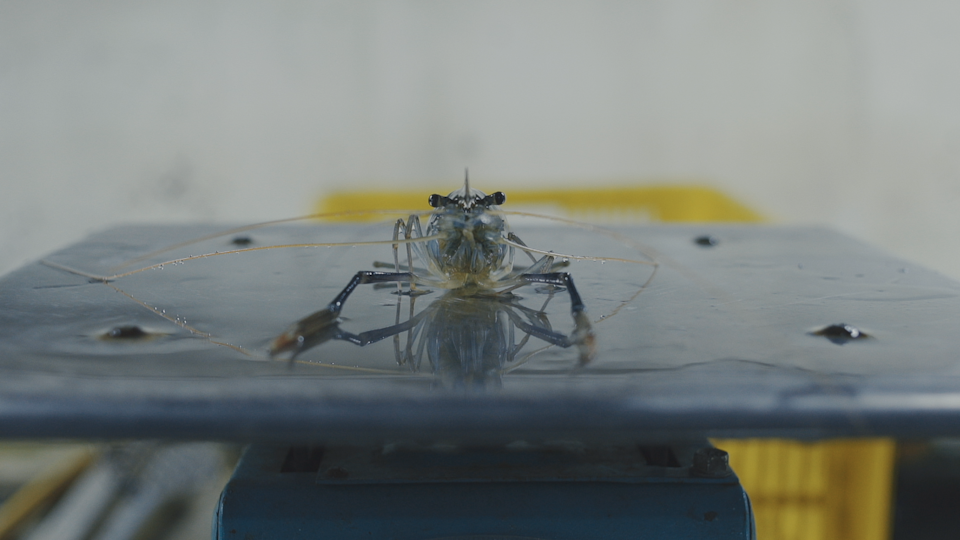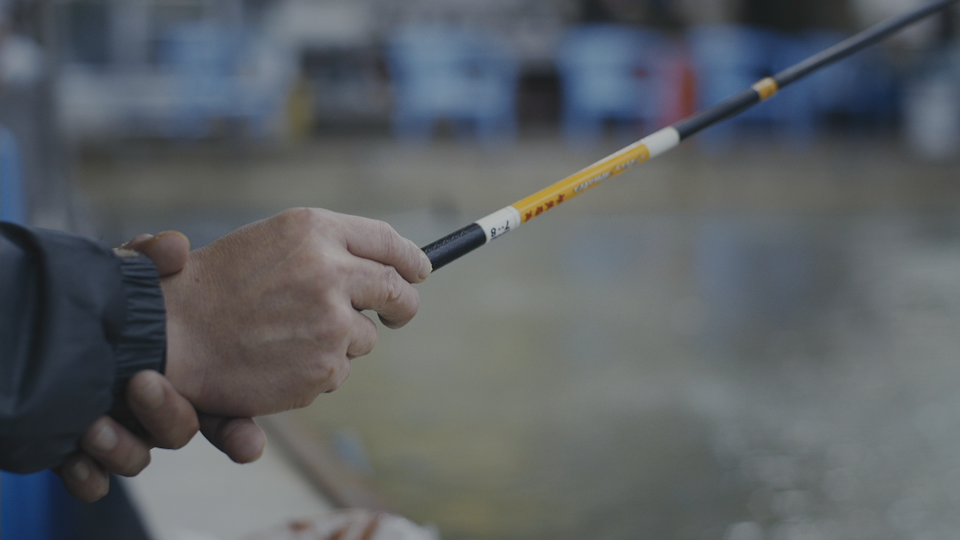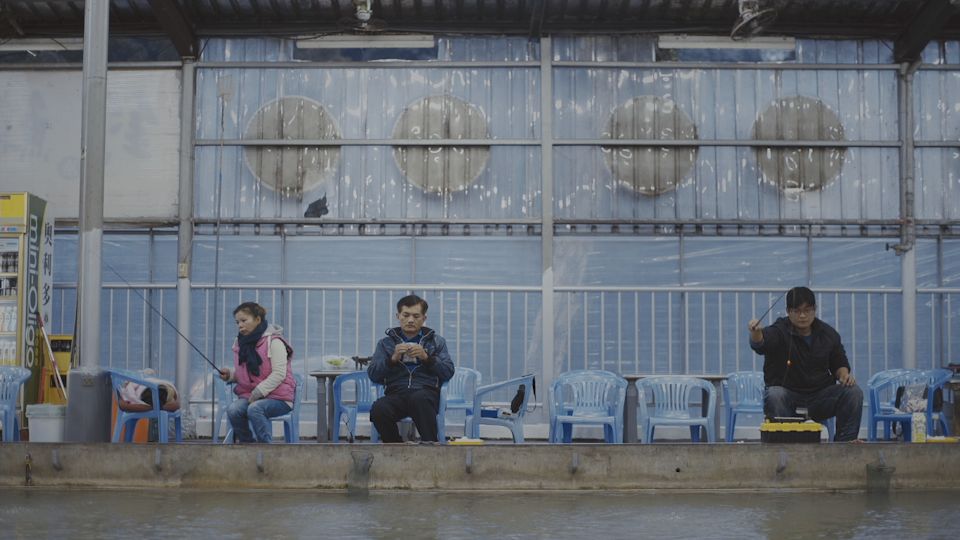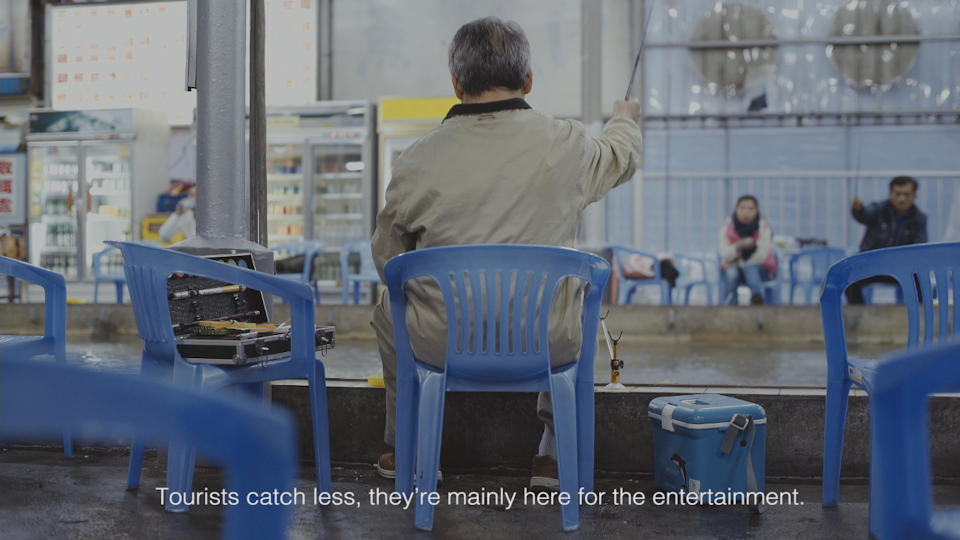Pool To Table
Documentary
Tiny, circular “fishing floats,” attached to baited lines, bob on the water like wayward mini-beach balls. Plastic lawn chairs scrape against the concrete floor, as would-be fishermen shift and wait for the slightest tug. Tinny Mandarin music accompanies the bubbling of large water filters. But the most evocative sound reverberating through Taiwan’s catch-your-own shrimp bars is the sizzle of prawns on the grill.
Heat from the gas-powered grills transforms tasty Grand Duke shrimp from bluish ochre to coral pink. No need to order off the menu here. Instead, a fisherman sits patiently by the pool, then brings his catch over to the cooking station once he’s decided there are enough of the plump crustaceans in his bag to make a meal. He declaws them after catching them; adds salt, soy sauce, and wasabi; then eats with a side of cabbage stir-fry. His cold beer will be delivered in conventional fashion.
This is indoor shrimping, an all-ages pastime that’s found a following in Taiwan over the past three decades. It combines the after-work conviviality of bowling with a reverential nod to the island nation’s pre-industrial marine culture. Even practiced in a contemporary urban setting, fishing here is a throwback to simpler times—never mind the fluorescent-lit warehouses and clockwork stocking of the shrimp pools.
It’s not just nostalgic pensioners sitting poolside. Young, middle-class city-dwellers have also taken to the ‘sport’ in recent years. Many of them can easily afford it. The cost of renting a pole and bait for an hour, without limitation on how many shrimp you catch, is about $10 USD. Succeeding at this type of shrimping (where lines are baited with chicken liver or shrimp parts) is harder than it looks. Experienced shrimpers measure the depth of the pool to determine where exactly to dangle their bait. They resist the impulse to jerk the line on the first tug.
Most of Taiwan’s shrimp bars are situated on the outskirts of large cities, rather than near the center, because of the proximity to springs. Just a 40-minute drive from downtown Taipei lies a strip of these enterprises, built under mountains and over freshwater sources. Not all shrimp bars are created equal. At one in Taichung, an industrial city on the west coast, the water quality is dubious and the slow-moving shrimp compete with the distracting movements of exotic dancers—a different type of sizzle.
Text: Greg von Portz
Excerpt from Jungles In Paris / junglesinparis.com/stories/taiwan-s-shrimp-fishing-bars
Featured on Nowness
nowness.com/story/pool-to-table-jungles-in-paris-shrimp
You may have heard of farm-to-table cooking, a movement where food is delivered directly from the producer to your plate. In the Taiwanese capital of Taipei, a new craze is seeing people cut out the middleman, fishing for shrimp in huge urban pools. Here, Oliver Hartman of filmmaking collective Jungles in Paris talks about the pastime: “The film is about shrimping—kind of a specific cultural activity. People fish for their own shrimp and usually cook and eat them on site (often prepared with a little bit of salt). Some of the older guys just go to catch the shrimp and give them to other folks. “To add to the sport, the water is made opaque so you can't see the shrimp” “This was filmed in Shinlin, about 40 minutes from New Taipei City. There are a handful of these spots and many are open late. To add to the sport, the water is made opaque so you can't see the shrimp.”
Ananda Pellerin (Program Director at Nowness)
CREDITS
Director: Tim Cheng
Cinematography: Vadim Aynbinder
Producer: Oliver Hartman
Co - Producer: YOYUU Creative
Editor: Matt Schaff
Color: Carlos Flores
Sound design & Audio mix: Josh Wilson
Production Company: Jungles in Paris
